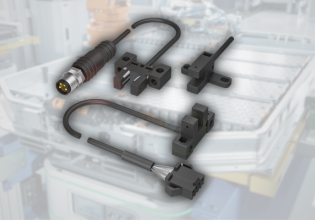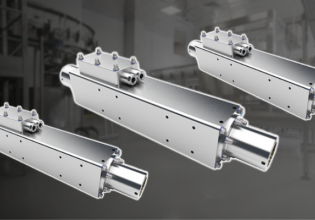Failure Mode and Effects Analysis (FMEA) Steps and Applications in Industrial Automation
Learn the definition of failure mode and effects analysis (FMEA), steps to execute it, and applications in the industry.
Failure mode and effect analysis (FMEA) is an effective tool that aims to anticipate and prevent failures in a process or product. FMEA was first developed in the 1940s by the U.S. military to reduce weapons and ammunition production issues. The success of that program led to the rapid adoption of FMEA by other agencies and the private sector, including NASA, the Society of Automotive Engineers (SAE), and several vehicle manufacturers.

Figure 1. The Skylab was the world’s first space station, designed and built by NASA using FMEA. Image used courtesy of NASA
The FMEA method remained essentially unchanged for decades. Nowadays, it is still extensively used in many industries, including manufacturing, software, and healthcare. In the software industry, FMEA has led to increasingly successful design processes and fewer systems issues after implementation. FMEA has also been used to enhance the agile methodology in software development.
What is Failure Mode and Effects Analysis (FMEA)?
Failure mode and effects analysis (FMEA) is a tool consisting of a series of steps that look at how a process or product can fail and at the impacts of these failures. The failure mode refers to the different ways in which something can fail. Effect analysis is the evaluation and prioritization of the effect of each failure on the product or process.
There are two main types of FMEA: Design FMEA and Process FMEA.
A Design FMEA looks into how a product can break, leading to losses and sometimes safety issues. Some of the product characteristics reviewed during a Design FMEA are dimensional tolerances, interactions with other products, material properties, and environmental factors.
Conversely, a Process FMEA focuses on failures that reduce reliability and quality. This type of FMEA deals with machines, methodologies, and external environmental factors.

Figure 2. FMEA looks at different angles to ensure the analysis is comprehensive. Image used courtesy of Riskonnect
An FMEA can be executed at different milestones of the product or the process lifecycle: design, go-live, and continuous improvement. Although, the earlier that a potential failure is identified, the less costly and less effort-intensive it is likely to be.
The FMEA Method
An FMEA starts by putting together a team that performs different functions within the organization. The organizational functions involved depend on the subject of the FMEA, but ideally, all the subject’s stakeholders are included. FMEAs can also be part of larger continuous improvement initiatives within a company.
At this point, the subject and scope of the FMEA must be identified. Then, the FMEA team uses a form known as the FMEA template to start the step-by-step analysis. Steps to complete the form are described below.

Figure 3. An example FMEA template. Image used courtesy of Visual Paradigm
- Identify the key process steps or inputs and enter them in the first column. All the functions involved in the FMEA exercise need to collaborate with identifying what is relevant.
- For each process step, identify how it can fail. This is known as the failure mode. Enter the failure mode for each process step in the second column.
- Evaluate the effects of each failure mode. This is the “effect analysis” part of the exercise. It is important to note that what may be low impact in one area might be critical in another; hence, the importance of a cross-functional team.
- On a scale from one to ten, rate the severity of each failure effect, with one being “low severity” and ten being “highly severe.”
- Brainstorm and list the possible cause of each failure. Then, rank it from one to ten, based on how likely it is to occur.
- Identify the controls that the product or process already has in place to keep the failure from occurring. Then, rank each control based on its effectiveness. In this case, one means the control is highly effective, and ten represents the control is not effective at all.
- The RPN column means “risk priority number.” This number is calculated by multiplying the three previous ranking values for severity, occurrence, and detection.
- The higher the RPN, the more serious the problem or subject of the FMEA. This number will serve the team to decide what steps to focus on first.
- Another brainstorming session produces possible actions for remediation. Each action is assigned a person or area responsible for its execution. This is the most extensive step of the FMEA process, and multiple subprocesses might result from each remediation action.
- After the remediation actions have been completed, the team reconvenes to once again score each process step and calculate new RPN values. Based on the results, a new remediations iteration might occur, or the FMEA project can be completed.
FMEA Applications in Industrial Automation
In the industry, the FMEA method is a valuable tool to reduce failures and their effects during the design and production processes. The method can be applied at different milestones of the process, but the same logic applies—the earlier the failure is corrected, the smaller the negative impacts will be. Ideally, an FMEA exercise is executed every time that a new product or process is developed and before a change to an existing procedure is introduced.

Figure 4. The transportation and logistics industry has benefitted from FMEA. Image used courtesy of Cleo
Numerous industrial sectors use FMEA, including automotive, manufacturing, healthcare, software, and transportation and logistics. Automobile manufacturers were among the first to adopt FMEA as a tool to improve safety and reduce the probability of mass recalls.
The manufacturing industry places special focus on process FMEAs to reduce unexpected downtime and losses of production capacity. Transportation and logistics is another industry where FMEA has been helpful to improve processes and mitigate logistical bottlenecks.
Automotive, manufacturing, healthcare, software, transportation, and logistics aren’t the only industries that can benefit from the FMEA method. Any facility with machines and processes that should be monitored for failures can profit from it. How do you use FMEA?






